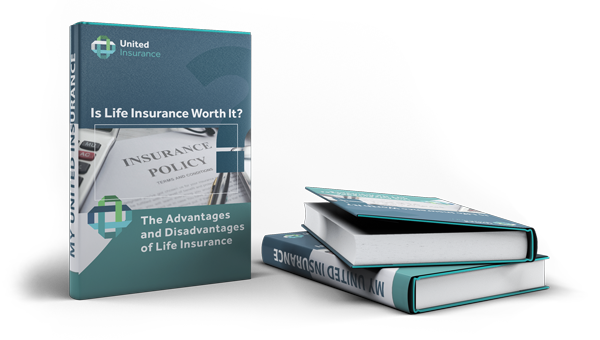
Indexed universal life insurance policies are a type of permanent life insurance. They offer the guarantees of a traditional universal life policy, as well as a potential for increased growth in the cash value account based on an indexing strategy. This can make them an attractive option for those looking for long-term financial security. In this blog post, we will explore what indexed universal life policies are and how they work.
Explaining Indexed Universal Life
Indexed universal life insurance, or IUL, is a type of universal life insurance. Rather than the cash value portion growing on a fixed interest rate, it’s tied to the performance of a market index, like the S&P 500.
Unlike investing directly in an index fund, however, you won’t lose money when the market has a downturn. This is because a guarantee applies to your principal, insuring it against losses. On the other hand, there’s usually a cap on the maximum return you can earn. Many times, you’ll also be able to divide your assets between fixed and indexed portions of your policy.
To better understand IUL, it helps to have a grip on the main types of life insurance. Broadly speaking, the two main versions are term life insurance and permanent insurance. Within the latter category, there are many varieties, the most common of which are whole life and universal life insurance.

Whole Life Insurance
This is a permanent policy, which means that there’s no time limit on when your family can receive a benefit. Furthermore, some of the premiums you pay go toward funding a cash account. Once enough money inhabits that account, it will fund your eventual payout. However, you can also borrow against or withdraw from the cash while you’re still alive.
Universal Life Insurance
Also, a permanent policy comes complete with a cash-value account. They’re mainly differentiated by their flexibility, allowing you to adjust your premiums and death benefits. You may also be able to realize higher interest rates on the growth of the cash value and use that cash value to pay for premiums.
Term Life Insurance
This type of insurance covers a specific time frame which typically ranges from 10 to 30 years. It’s a temporary type of coverage since it covers you for a certain amount of years. If you die within the covered period, your family gets a death benefit, which it can use to cover funeral expenses and replace your lost income. It’s usually less expensive than other insurance options.
Discussing The Benefits
One of the most attractive features of an IUL is the ability to take advantage of stock market returns without the risk of loss. And it does so while building up a death benefit that your beneficiaries will receive tax-free.
Other benefits of indexed universal life insurance include:
- Unlimited contributions: Traditional retirement avenues have contribution limits, but IULs don’t.
- Tax-free growth and distributions: “IUL distributions are tax-free versus tax-deferred in the other vehicles,” says Chris Abrams, an IUL expert at Abrams Insurance Solutions. That means you don’t have to pay taxes on the money you eventually draw from the cash value of the IUL. It’s similar to a Roth IRA in this respect.
- Use at any time: With regular retirement programs, you have to wait until you hit the 59.5 minimum age for distribution before you can start taking money out. With an IUL, there is no age requirement.
- Death benefit: A tax-free death benefit is distributed to your beneficiaries, which means they won’t face income or death taxes.
- Loan availability: Depending on your policy and available cash, you can borrow money from your IUL without facing penalties, taxes, or a credit check. You also do not have to pay back the money you take out.
Some of The Negative Takeaways
There are many reasons to buy an IUL insurance policy. Like any financial product or policy, though, some drawbacks might hold you back from investing in an IUL. Critics point to high fees associated with permanent life policies, including sales and administrative fees. By contrast, a retirement account, especially one comprised of low-cost ETFs or mutual funds, will lose significantly less to fees.
Someone seeking both life insurance protection and tax-free retirement distributions might be better off getting a term life policy (which tends to be much cheaper) and opening a Roth IRA, rather than trying to combine the benefits into one product.
Other cons of IUL insurance include:
- Earnings caps: Most policies have a limit on how much you can earn within the plan. When the market is having a particularly good year, your money will earn less than you would just invest directly. Along with this, there are index caps and maximum participation rates that the insurance company can change.
- Taxable income: If the policy lapses or is surrendered, the money you’ve taken out may be taxable.

In Closing
Indexed universal life insurance policies have their pros and cons, like any financial product. It’s important to do your research and work with a qualified financial advisor to see if an IUL is a right fit for you and your family. If you’re looking for more information on indexed universal life insurance, reach out to one of our licensed agents. Thank for reading!
